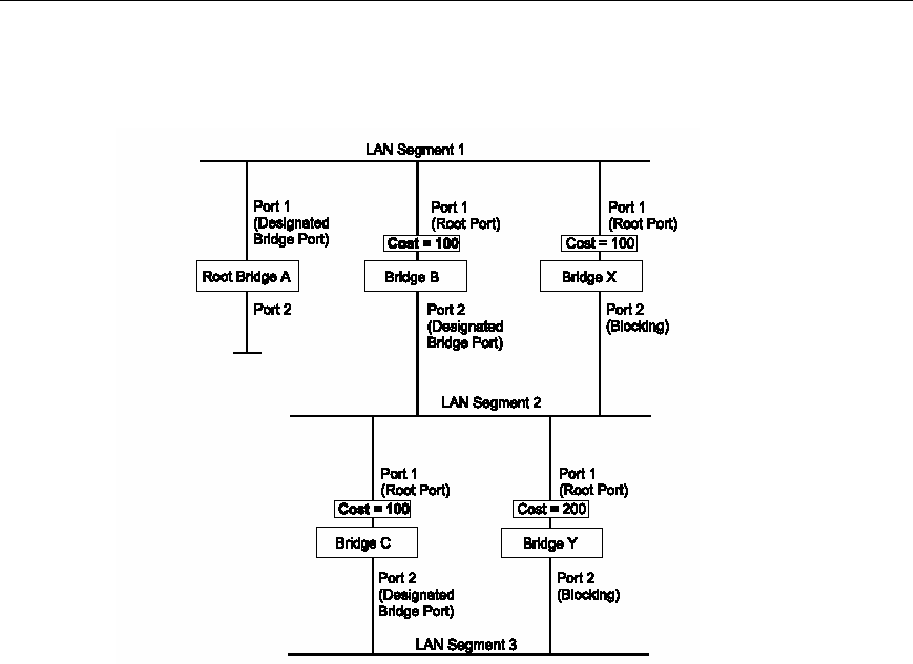
EDS-508 Series User’s Manual Featured Functions
3-26
STP Example
The figure below shows a LAN that has STP enabled. The LAN has three segments, and each
segment is connected using two possible links.
# Bridge A has the lowest Bridge Identifier in the network, and has therefore been selected as
the Root Bridge.
# Because Bridge A is the Root Bridge, it is also the Designated Bridge for LAN segment 1.
Port 1 on Bridge A is therefore selected as the Designated Bridge Port for LAN Segment 1.
# Ports 1 of Bridges B, C, X, and Y have been defined as Root Ports because they are the
nearest to the Root Bridge and therefore have the most efficient path.
# Bridges B and X offer the same Root Path Cost for LAN segment 2. However, Bridge B has
been selected as the Designated Bridge for the segment because it has a lower Bridge
Identifier. Port 2 on Bridge B is therefore selected as the Designated Bridge Port for LAN
Segment 2.
# Bridge C has been selected as the Designated Bridge for LAN segment 3, because it offers
the lowest Root Path Cost for LAN Segment 3:
$ the route through Bridges C and B costs 200 (C to B=100, B to A=100)
$ the route through Bridges Y and B costs 300 (Y to B=200, B to A=100)
Port 2 on Bridge C is therefore selected as the Designated Bridge Port for LAN Segment 3.
Using STP on a Network with Multiple VLANs
IEEE Std 802.1D, 1998 Edition, does not take into account VLANs when it calculates STP
information—the calculations are only performed on the basis of physical connections. For this
reason, some network configurations can result in VLANs being subdivided into a number of
isolated sections by the STP system. Therefore, you must ensure that any VLAN configuration on
your network takes into account the expected STP topology and alternative topologies that may


















